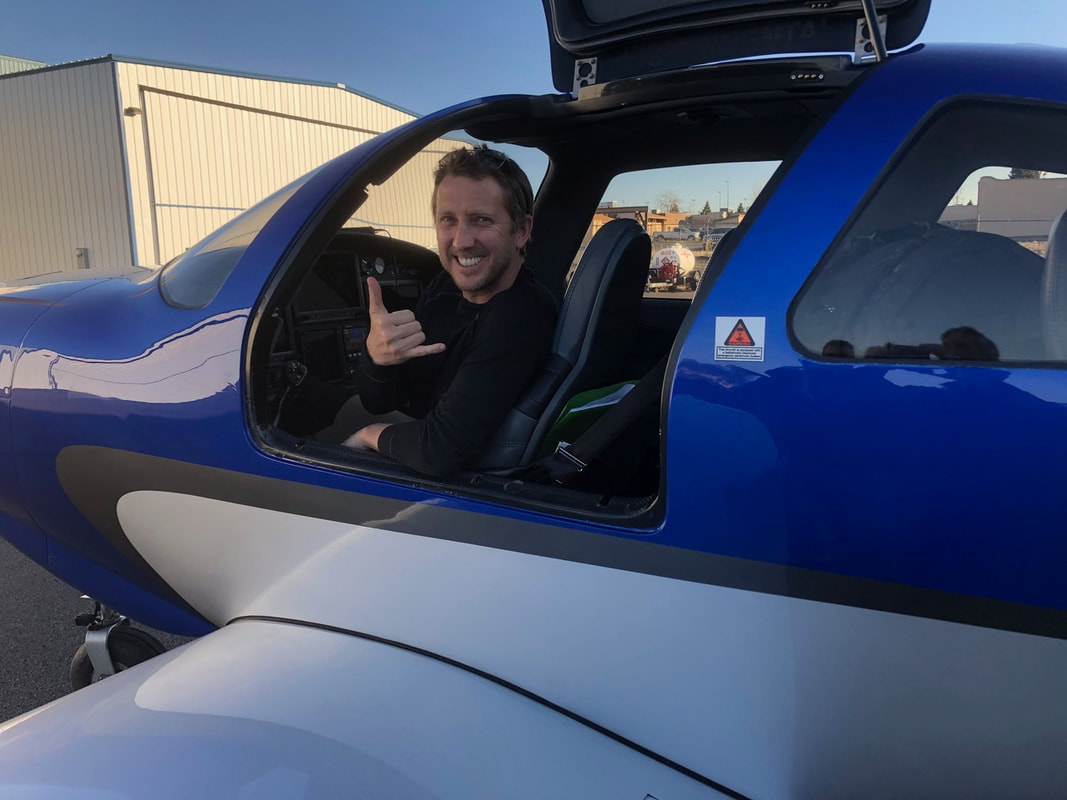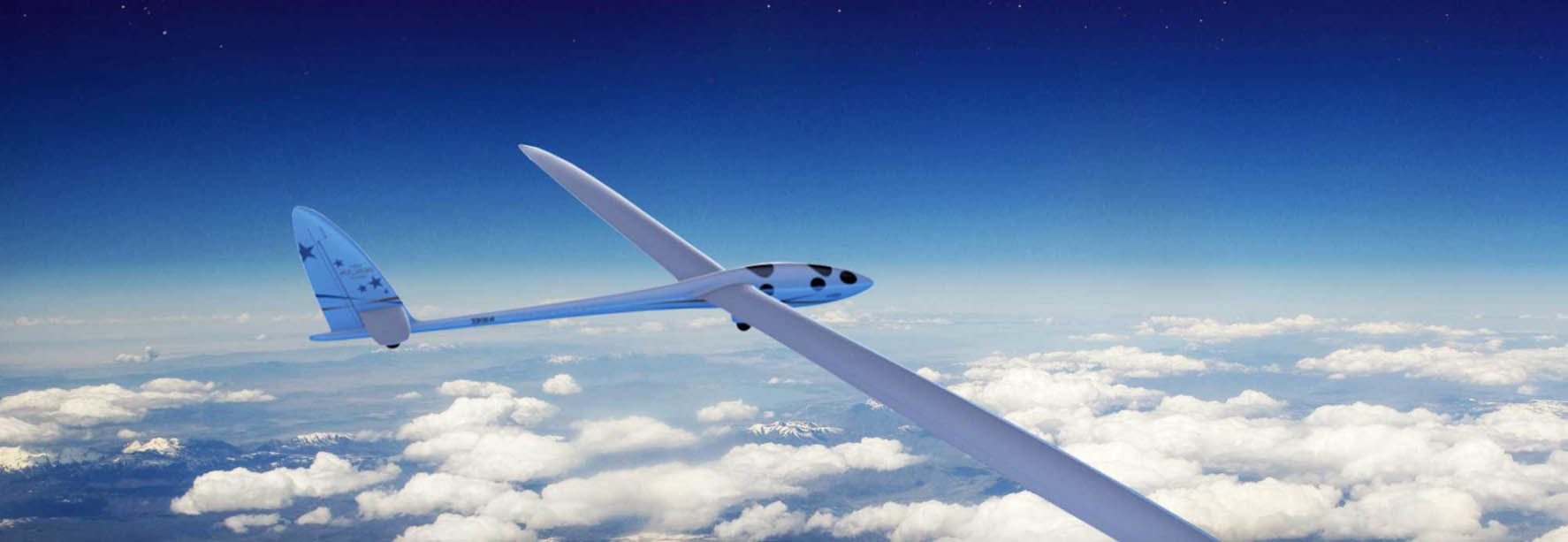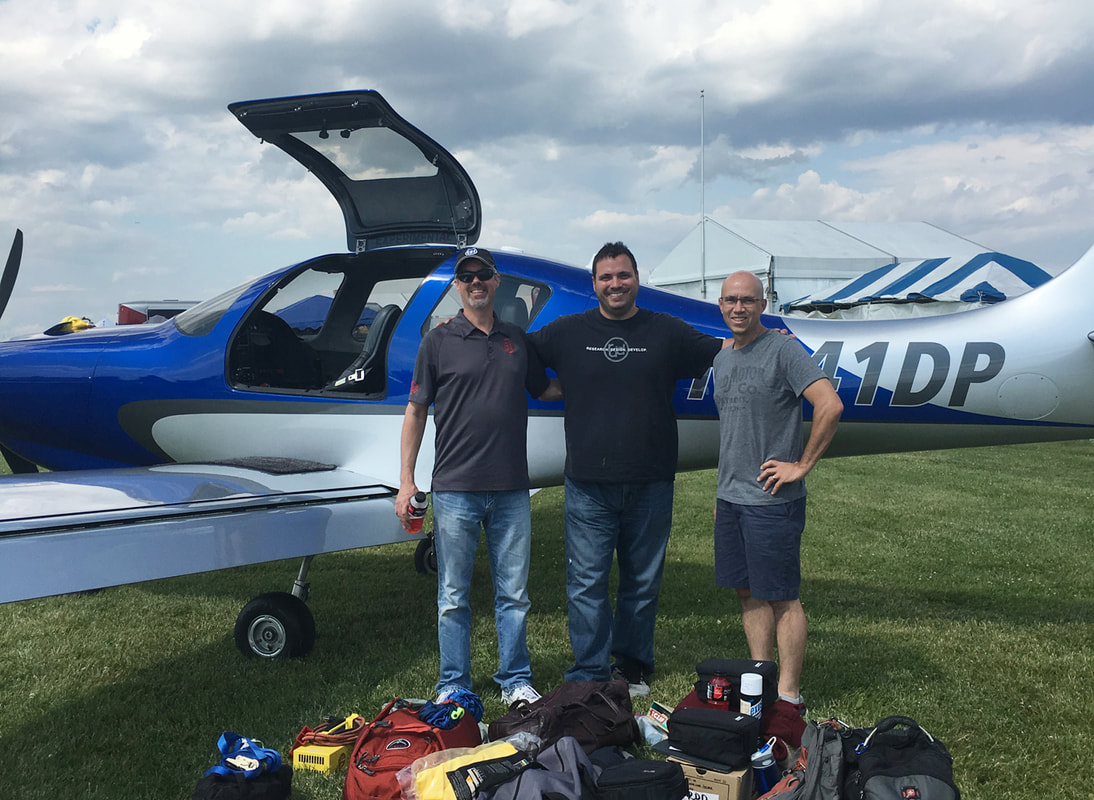|
Stock configuration plane cruises from Anchorage, AK to Redmond, OR in 5.5 hours. Redmond, OR – Whoever said records are made to be broken must’ve known something about RDD, an experimental aircraft manufacturer from Redmond, Oregon. In March of this year, just before COVID19 quarantines went into place, Sisters, Oregon resident Paul Hodge piloted his LX7 personal aircraft from Redmond, Oregon to Anchorage, in just six hours for, a new all-time record for that distance.
After arriving in Anchorage, Hodge and co-pilot Laird Hamilton, CMO of Laird Superfoods in Sisters, Oregon, were picked up for an epic day of heli-skiing and boarding at Tordrillo Mountain Lodge. Hodge was delighted at how the LX7’s average airspeed of almost 269 mph with standard range made it so easy to get there despite less than favorable winds. “It’s pretty amazing to be able to climb into your own plane and be someplace epic so quickly,” he said. “Virtually every other personal aircraft would’ve had to stop to refuel in Canada, which would mean wasting an hour or more going through customs.” To prove the six-hour outward bound flight was no fluke, Hodge hopped in his LX7 a few days later and flew back to Redmond in just 5.5 hours, shattering his own record with an average speed of 317 mph. “Setting two records in two flights was pretty amazing,” said Hodge. “But I think it’s even more incredible that I had enough fuel left on the return flight to continue all the way to Los Angeles if I wanted to.” Thanks to RDD’s relentless innovation, the LX7 piston-powered aircraft is quickly becoming known for doing unheard of things in the air, including: • Climbing at a rate of 2,000 feet/minute. • Extending range with a fuel capacity of 180 gallons. • Traveling 2,125 nautical miles in as little as 8.5 hours. “For many years, the Holy Grail for experimental aircraft was the ability to fly 1,000 nautical miles without stopping,” said David McRae, RDD’s Co-Owner and Director of Marketing, Sales & Business Development. “But these days the LX7 just obliterates that mark with the efficiency to go 2.5 times that distance.” With its exceptional range, it’s only natural that McRae and the crew at RDD have their sights set on breaking the record for flying from coast to coast. But traveling exceptional distances is just the beginning of what makes the LX7 so unique. The team at RDD has gone to great lengths to make every mile more comfortable with hand-crafted heated leather seats, ergonomic controls, and a pressurized cabin. In addition, safety has been enhanced as well with an automated fuel management system, airbag front seat restraints, and a whole-aircraft parachute, among other reassuring features. The LX7’s advancements in speed, distance, comfort and safety couldn’t come at a better time as flights on commercial airlines become less convenient and more restrictive. What’s more, aviation enthusiasts from all over the world will be able to take a closer look at the LX7 as the EAA AirVenture – normally held in Oshkosh, Wisconsin – goes online later this month. Says McRae: “We’re extremely proud of the fact that our planes are regularly breaking records for speed and distance – not with professional test pilots flying in heavily modified aircraft under optimum conditions – but with regular people like Paul Hodge just doing what they enjoy most. To us, that’s the ultimate sense of freedom.” About RDD RDD Enterprises is a premiere aviation Research, Design & Development group with a rich aviation heritage serving the experimental aircraft community. Our goal is to service serious aviators by providing technologically advanced aircraft systems with impeccable safety and world-class support. Located in the Redmond, Oregon, RDD is proud to have been selected to help achieve aviation goals for a wide range of customers, from individuals to large corporations. Collectively, the RDD team has extensive experience with both experimental and certified aircraft in the areas of research, design, development, modification, fabrication, construction and customer support. To learn more about the LX7 piston or turbine models, visit www.lx7aircraft.com or call David McRae, at 541-504-0305, extension 1.
2 Comments
Redmond, OR – Research, Design, and Development LLC is taking aviation to new heights for pilots operating under the new Basic Medical rules.
In particular, the LX7-20 is a 550 SHP Pratt and Whitney powered airplane designed to operate at 285ktas at FL180 with a 5000’ cabin altitude on 28gph Jet A fuel. The company is also introducing the fixed gear model--whose name has not been determined yet. “The design philosophy for this aircraft is based on aircraft safety, efficiency, functionality, maintainability, aesthetics and simplicity. The result is an aircraft that provides the operator with a level of “freedom” previously unattainable,” said David McRae, one of the company’s owners. “The LX7 costs around the same as a new Cirrus SR22 G5 or Cessna TTx, will give the airplane much of the appeal of an FAA certificated high-performance single but with greater speed than you can find in a Part 23 model.” wrote Robert Goyer of Plane and Pilot. With the introduction of these aircraft, the LX7 family covers both fixed gear and retractable gear, pressurized cabin environments, and piston or turbine engine options. The LX7 exceeds industry standards in every relevant category, with a list of features and advantages so long that the plane has its own website (check it out at LX7aircraft.com). Highlights include: Handling: The LX7 expands on the aircraft manufacturing technologies that RDD has developed on experimental projects for Airbus and others. This gives the LX7 a stall speed of 63 knots, resulting in dramatically improved handling characteristics compared to the original IV-P. Avionics: Standard equipment for the LX7 includes a two-screen Garmin G3X Touch Flight Deck, the latest in WAAS technology coupled to the autopilot, with envelope protection and an emergency level function. Performance: The LX7 climbs at 2000 ft/min to reach cruising speeds of 260 KTAS @ 24 gph and 250 KTAS @ 18 gph. The combination of speed and endurance will take you miles beyond where other aircraft have to stop for fuel, making your trip shorter and more enjoyable. Range: Coast to coast without stopping? It’s totally possible with the LX7, with reserves left over. This aircraft will take you over 2,100 miles before you have to make a fuel stop. Fuel capacity is 180 gallons. Safety: Full-aircraft BRS parachute, Garmin EFIS with Active Traffic, Forward looking terrain, synthetic vision, and Satellite and ADS-B weather, AmSafe inflatable seatbelts for the forward occupants, and a pressurized cabin environment, single piece wing with dual spars. “The LX7 offers owners an unparalleled combination of performance, safety, luxury and value,” added McRae. “There’s just nothing else like it out there. I’ve been flying since 1989 and this airplane is like a traveling machine dream come true. I can easily fly from our facility in Redmond to just about anywhere I want to go without refueling,” continued McRae. “And the comfort level is superior to the original IV-P due to the increased legroom and passenger space. Flying with pressurization and greater fuel capacity increase confidence and peace of mind when tackling long distance flights,” McRae concluded. RDD (Research. Design. Develop.) Enterprises is a full-service aviation company based in Redmond Oregon. RDD has been providing expert ownership assistance for high-performance personal aircraft (certified and experimental) since 2006. The company has a reputation for balancing efficient production with creative solutions and customized detail. RDD completed the airframe construction for Airbus’ Perlan Project, a multi-million dollar collaborative project that is putting “engine-less aircraft on the edge of space” (perlanproject.org). You can learn more about RDD at RDDent.com or by calling 541-504-0305. ### Redmond, OR – Research, Design, and Development LLC is taking aviation to new heights with its LX7 Aircraft Conversion experimental aircraft. “The design philosophy for this aircraft is based on aircraft safety, efficiency, functionality, maintainability, aesthetics and simplicity. The result is an aircraft that provides the operator with a level of “freedom” previously unattainable,” said David McRae, one of the company’s owners. “The LX7 costs around the same as a new Cirrus SR22 G5 or Cessna TTx, will give the airplane much of the appeal of an FAA certificated high-performance single but with greater speed than you can find in a Part 23 model.” wrote Robert Goyer of Plane and Pilot. And, as part of the growing product family of the LX7, RDD is introducing the -20 which is a 550 SHP Pratt and Whitney powered airplane. They are also introducing the fixed gear model--whose name has not been determined yet. With the introduction of these aircraft, the LX7 family covers both fixed gear and retractable gear, pressurized cabin environments, and piston or turbine engine options. The LX7 exceeds industry standards in every relevant category, with a list of features and advantages so long that the plane has its own website (check it out at LX7aircraft.com). Highlights include: Handling: The LX7 expands on the aircraft manufacturing technologies that RDD has developed on experimental projects for Airbus and others. This gives the LX7 a stall speed of 63 knots, resulting in dramatically improved handling characteristics compared to the original IV-P. Avionics: Standard equipment for the LX7 includes a two-screen Garmin G3X Touch Flight Deck, the latest in WAAS technology coupled to the autopilot, with envelope protection and an emergency level function. Performance: The LX7 climbs at 2000 ft/min to reach cruising speeds of 260 KTAS @ 24 gph and 250 KTAS @ 18 gph. The combination of speed and endurance will take you miles beyond where other aircraft have to stop for fuel, making your trip shorter and more enjoyable. Range: Coast to coast without stopping? It’s totally possible with the LX7, with reserves left over. This aircraft will take you over 2,100 miles before you have to make a fuel stop. Fuel capacity is 180 gallons. Safety: Full-aircraft BRS parachute, Garmin EFIS with active traffic, forward looking terrain, synthetic vision, and satellite and ADS-B weather, AmSafe inflatable seat belts for the forward occupants, and a pressurized cabin environment, single piece wing with dual spars. “The LX7 offers owners an unparalleled combination of performance, safety, luxury and value. There’s just nothing else like it out there. I’ve been flying since 1989 and this airplane is like a traveling machine dream come true. I can easily fly from our facility in Redmond to just about anywhere I want to go without refueling." “The LX7 offers owners an unparalleled combination of performance, safety, luxury and value,” added McRae. “There’s just nothing else like it out there. I’ve been flying since 1989 and this airplane is like a traveling machine dream come true. I can easily fly from our facility in Redmond to just about anywhere I want to go without refueling,” continued McRae.
“And the comfort level is superior to the original IV-P due to the increased legroom and passenger space. Flying with pressurization and greater fuel capacity increase confidence and peace of mind when tackling long distance flights,” McRae concluded. RDD (Research. Design. Develop.) Enterprises is a full-service aviation company based in Redmond Oregon. RDD has been providing expert ownership assistance for high-performance personal aircraft (certified and experimental) since 2006. The company has a reputation for balancing efficient production with creative solutions and customized detail. RDD completed the airframe construction for Airbus’ Perlan Project, a multi-million dollar collaborative project that is putting “engine-less aircraft on the edge of space” (perlanproject.org). You can learn more about RDD at RDDent.com or by calling 541-504-0305. ### SEPTEMBER 3, 2017: The Airbus Perlan 2 Glider has set a new world altitude record for a glider today at 53,400 feet (unofficial), breaking the previous altitude record by more than 2500 feet. The crew was Jim Payne and Morgan Sandercock. The aircraft design was conceived by Winward Performance and RDD Enterprises completed the design and construction of the aircraft. The previous record, according to Wikipedia: "On August 29, 2006 Steve Fossett and Einar Enevoldson, the pilots of Perlan Mission I, broke the existing altitude record for gliders by soaring up to 50,671 feet (15,460m) in a standard glider using stratospheric waves of air." "We couldn't be happier for the Perlan team. The entire project has demonstrated their commitment to advancing the science and art of flying at high altitudes using only the power of the atmosphere." –Eric Schmidlin, RDD Enterprises The Perlan 2 first flew two years ago out of the Redmond Roberts Field Municipal Airport. The one year construction project was lead by Eric Schmidlin of RDD Enterprises. “We couldn’t be happier for the Perlan team”, exclaimed Schmidlin. "The entire project has demonstrated their commitment to advancing the science and art of flying at high altitudes using only the power of the atmosphere. The working relationship between Perlan and RDD has been a great model of two organizations working together toward a common goal and we are excited for the new record and continued success for Perlan.”
The Aircraft: The Airbus Perlan 2 is a pressurized sailplane designed to fly at the edge of space where the air density is less than 2% of what it is at sea level. It will carry a crew of two and scientific instruments needed to explore stratospheric mountain waves. The aircraft has a gross weight of 1,800 pounds and a wing span of 84 feet. Its true flight speed at 90,000 will be 350 knots (403 mph). The cabin will be pressurized to 8.5 psi (14,500 feet). The crew will breathe pure oxygen provided by a rebreather system. The Perlan Mission: The Perlan 2 will fly to 90,000 feet at the edge of space to explore the science of giant mountain waves that help create the ozone hole and change global climate models. This will require the engineering of a spacecraft with glider wings that can fly in less than 3% of normal air density and at temperatures of minus 70 degrees C, conditions approximating the surface of Mars. These missions will provide education and inspiration for young people seeking careers of exploration and adventure in engineering and science. Visit the RDD Enterprise Website > Visit the Perlan website for aircraft details > The last week of July was a fantastic experience from AirVenture 2017. The RDD team flew the recently completed LX7, N141DP, to the biggest aviation show on earth.
The entire experience was filled with firsts for the team and for the airplane. The show was very well attended and the traffic through the display was extremely busy. It was both fun and rewarding to watch the flying public grasp the capabilities and elegance of the design first hand. This was all capped off with a non-stop flight from Oshkosh to Redmond of just over 6 hours. The airplane did great and continued to impress us with a steady 250 knot true airspeed performance all the way home on 17 gallons of fuel per hour. View N141DP on the FlightAware website > The most intriguing statistic was the evidence of excellent flying performance of the wing as demonstrated by the steady speed from start of cruise to start of descent. The indicated airspeed remained constant despite burning over 600 lbs of fuel. This means the wing is flying nicely in its performance profile at all weights. Now that we are back in Redmond the activity level has not subsided a bit. Serial number 2 will get its wing next week, while serial number 3 has started into the process of the initial preparation of the fuselage. Both serial numbers have a delivery date on or before the end of October. There will be 4 more flying LX7s before the end of the year. We are very excited about the progress that has been made in all areas of the company to make this project a reality. We welcome you to visit and see first hand what we are doing to advance experimental aviation in safety and manufacturing repeatability. Come on by! Thank you for your continued support and interest in RDD. |
LX7 NewsArticles, interviews and news about the new LX7 aircraft and RDD. Archives
July 2023
Categories |




 RSS Feed
RSS Feed

